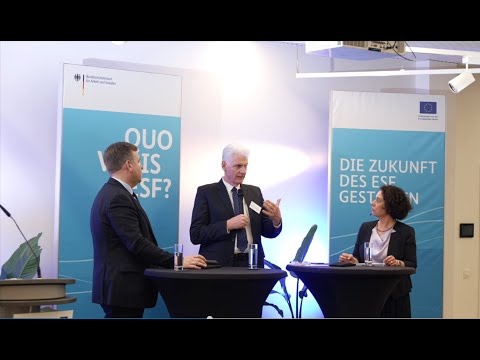The current programming period for the ESF+ will end in December 2027. By 30 June 2025, the European Commission will present proposals for the next Multiannual Financial Framework, which will be pivotal in shaping the future of Cohesion Policy, including the ESF+. Discussions about the direction of the ESF+ post-2027 have already begun.
Key issues
The world and the EU are facing significant challenges.
- Climate change and energy costs – Climate change is driving up energy costs and increasing the need for investment in cleaner technologies. However, many cannot afford these changes. Targeted support for the most vulnerable citizens is essential during this transition.
- Declining global competitiveness – Europe’s global economic standing is under pressure, highlighting the need for investment in innovation and skills. In 2000, more than 40 of the world’s largest companies were European; today, only 15 remain in that group.
- Demographic trends and skills shortages – Europe’s working-age population is shrinking, with 15 million fewer people of working age projected by 2040, and a further 27 million fewer by 2050. This trend is contributing to skills shortages and mismatches.
- Social disparities – Social inequalities remain a major issue, with 95 million Europeans at risk of poverty.
In light of these challenges, Cohesion Policy, and particularly the ESF+, play a vital role in strengthening resilience and supporting citizens.
Future directions for the ESF+
A comprehensive and ambitious approach to Cohesion Policy is essential for the resilience of the European project. Future funds must adapt to emerging needs, drawing on lessons from initiatives such as the Recovery and Resilience Facility (RRF), while maintaining a strong focus on economic, social, and territorial cohesion.
The main themes shaping the future of the ESF+ are as follows:
- Aligning with the European policy agenda – European cohesion funding could promote explicitly the European policy agenda with the European Pillar of Social Rights at its core, focusing on the adaptation to green, digital and demographic transition, with “social” as a central value.
- Integrating European Semester recommendations – European semester recommendations, including the analysis of social convergence challenges, could play a stronger role in the programming. The importance and strengths of the partnership principle should remain at the core of the policy.
- Adopting a performance-based approach – A performance-based approach could simplify processes and reduce administrative burden for Member States. Simplification and burden reduction should extent to the beneficiary level, whilst maintaining a robust assurance model.
Opinions and position papers
- Group of high-level specialists on the future of cohesion policy – The report ‘Forging a sustainable future together: Cohesion for a competitive and inclusive Europe’ highlights the need for investments tailored to each region’s strengths and challenges, with a focus on human capital to reduce inequalities. Visit the future of Cohesion Policy to learn more.
- Mid-term evaluation of the Recovery and Resilience Facility (RRF) – According to this evaluation, the RRF has effectively incentivised structural reforms and investments in Member States by linking funding disbursements to specific targets, marking it as a successful performance-based instrument at the EU level.
- 9th Cohesion Report – This report highlights the positive impact of Cohesion Policy on growth, employment, and social inclusion, particularly in less developed regions. It also stresses the need for strategies that balance long-term development with flexibility to address new crises.
- 9th Cohesion Forum – Discussions at the Forum underscored that improving administrative capacity and investing in both infrastructure and human capital are essential to tackle demographic, climate, and digital transitions.
- ESF+ Committee – The ESF+ Committee's Opinion on the future of the ESF calls for a more results-oriented fund with less administrative burden, while recognising the need to include conditionality regarding the rule of law.
- The ESF+ Evaluation Partnership network on Evaluation, Monitoring and Reporting has adopted two opinions on the future of the ESF+, the first on evaluation arrangements, the second on monitoring and reporting arrangements.
- The ESF thematic network on Simplification will also issue a position paper on the ESF+ post-2027.
Studies
DG EMPL has started studies in view of the impact assessment of the future European Social Fund Proposal.
The first study analyses reforms in EU Member States (2014–2022), identifying necessary conditions for successful structural change in the broad areas of ESF+ intervention.
The second study will examine how to ensure the long-term sustainability of ESF+ results. The third will focus on implementation modes and division of labour. Lastly, the fourth study will assess the potential impact of current and future challenges on ESF+ areas of action.
Additional resources
Council of the European Union
- Conclusions on a Long-Term Vision for the EU’s Rural Areas, November 2023
- Conclusions on Managing Demographic Change in Europe, December 2023
- Conclusions on the Communication on the 9th Cohesion Report, June 2024
European Economic and Social Committee
- Opinion on ‘The Recovery and Resilience Facility and Cohesion Policy: Towards Cohesion Policy 2.0’, September 2023
European Committee of the Regions



